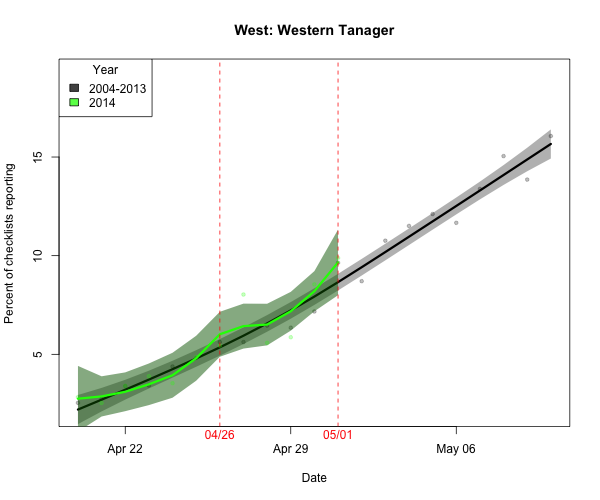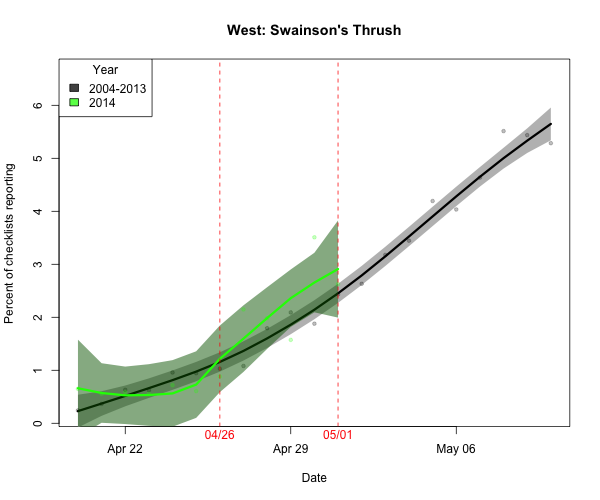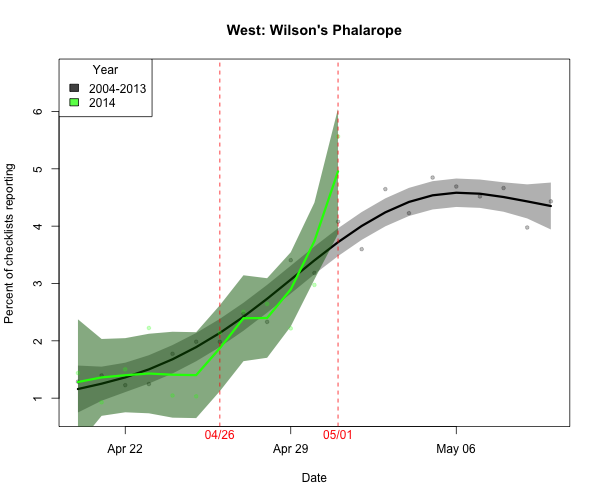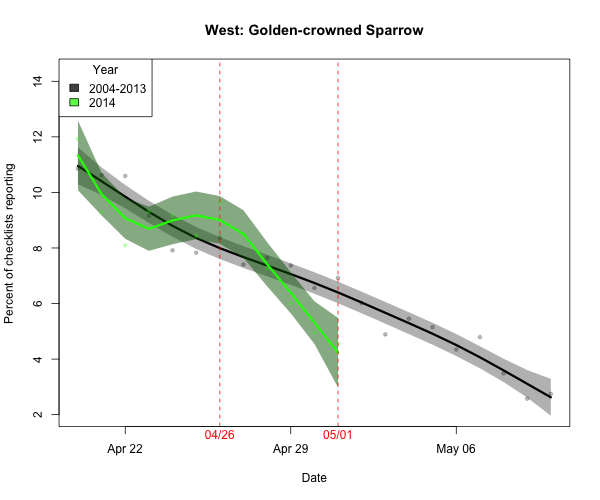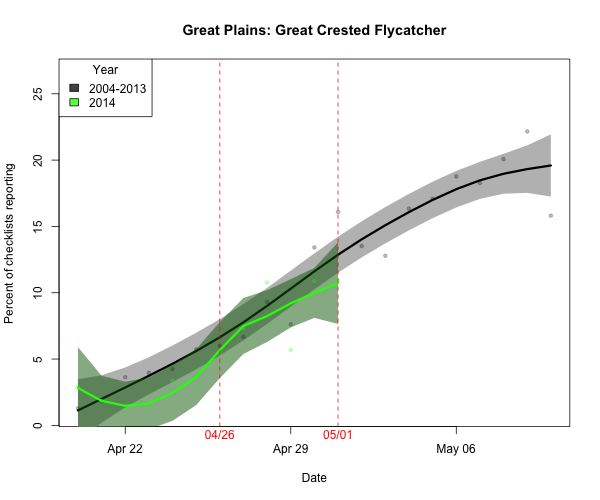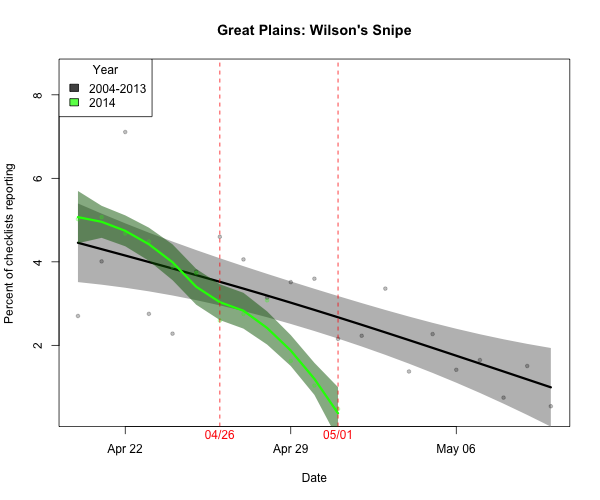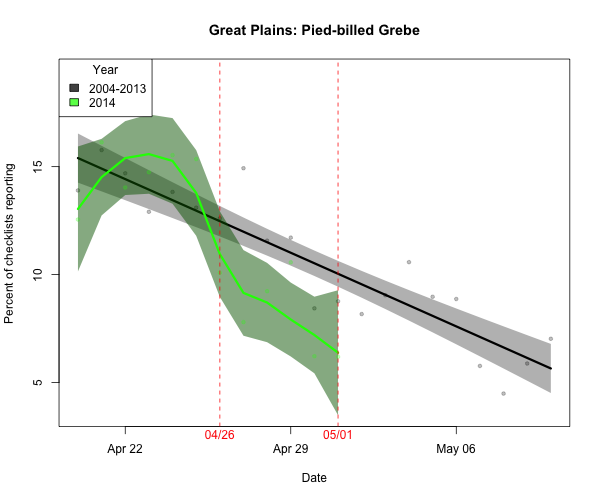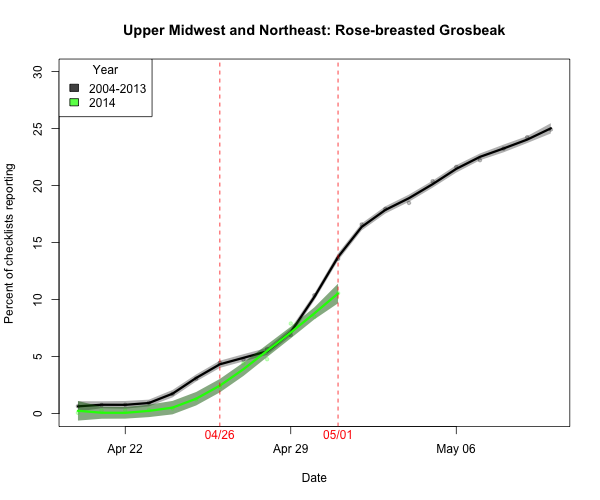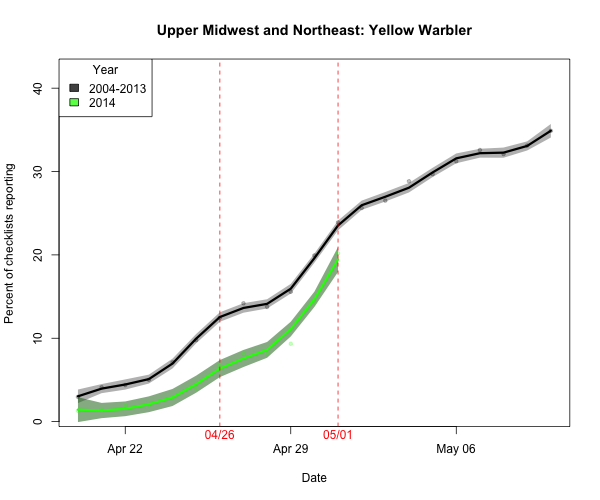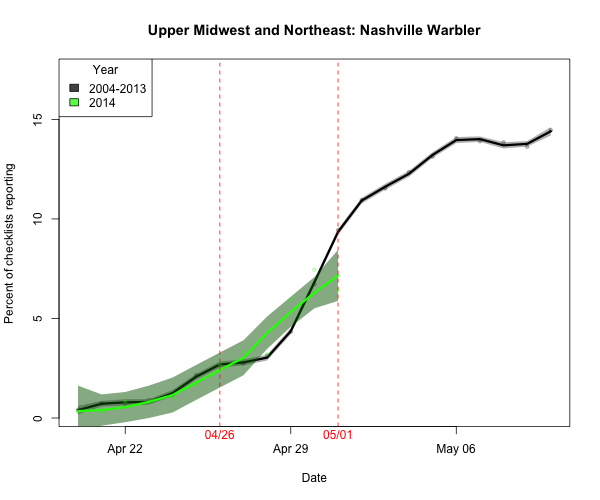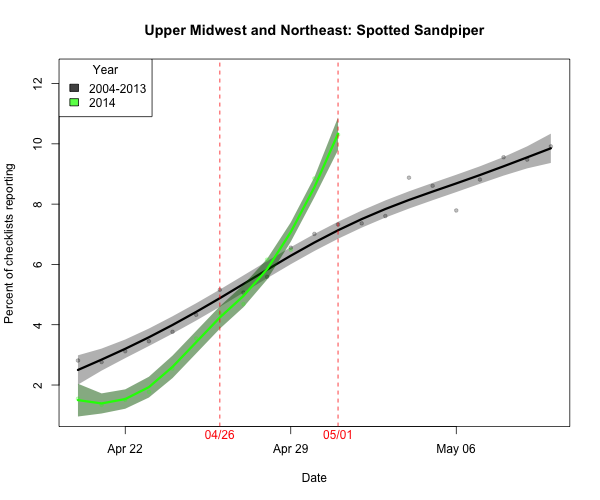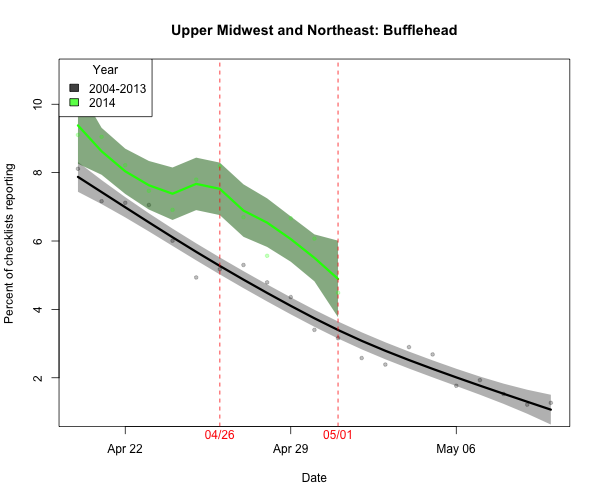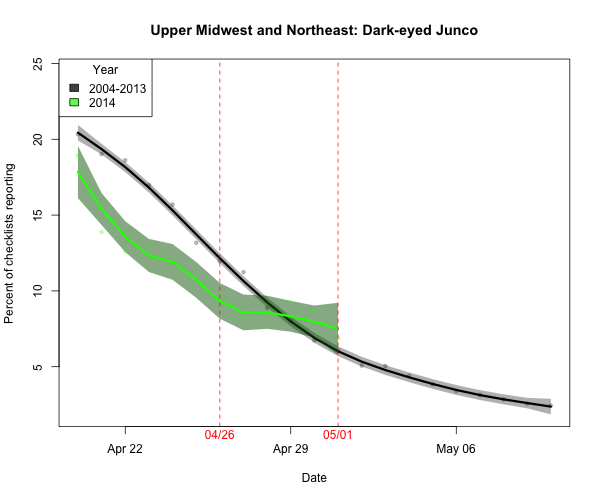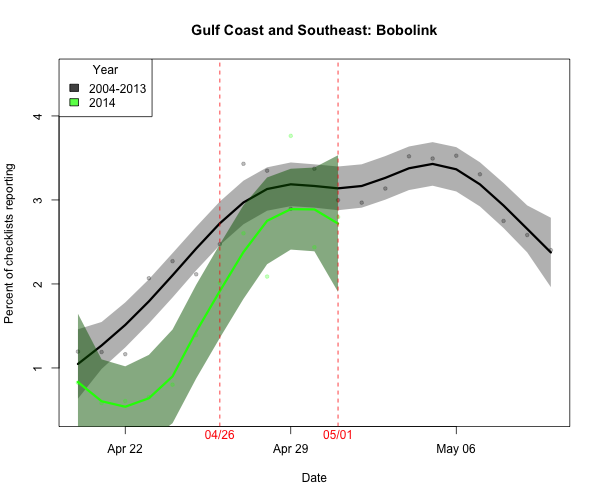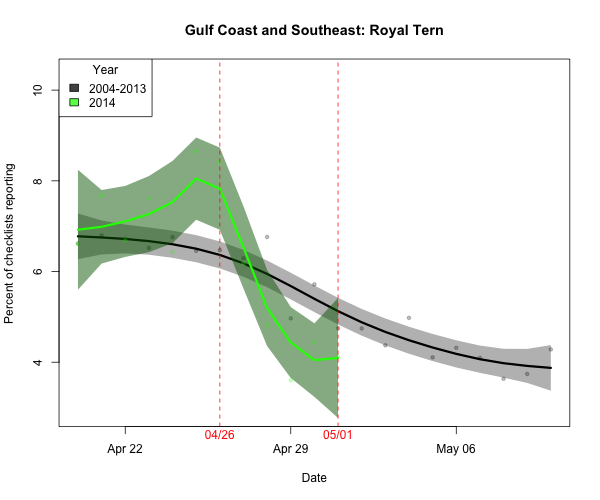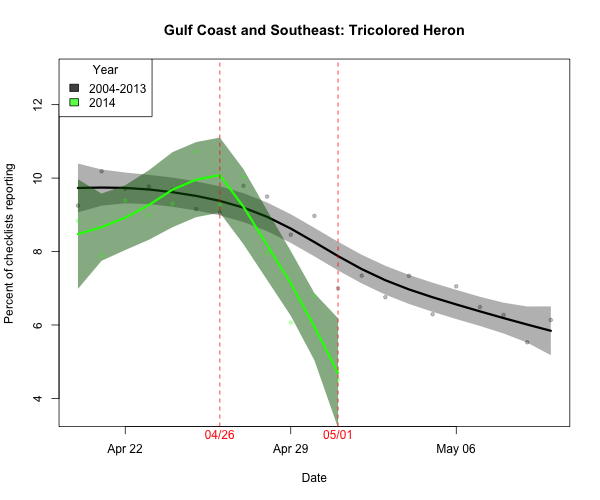Continental Summary
Moderate to heavy movement from the Great Plains to the Gulf Coast in the early part of the period gave way to generally light movement across much of the country towards the end of the week. Species on the move included Spotted Sandpiper, Western Tanager, Yellow Warbler, Nashville Warbler, Baltimore Oriole, Bobolink, Mississippi Kite, and Broad-winged Hawk.
West
Despite a few isolated bouts of precipitation, generally favorable conditions for light to moderate movement prevailed over the region; at least some migration took place on most nights of the week. Species on the move this week included arriving Spotted Sandpiper, Western Tanager, Swainson’s Thrush, Wilson’s Phalarope, Warbling Vireo, Black-headed Grosbeak, Yellow Warbler, Long-billed Dowitcher, Lazuli Bunting, Brown-headed Cowbird, Cliff Swallow, Violet-green Swallow, and Barn Swallow. Golden-crowned Sparrow, Bufflehead, and Green-winged Teal were among those departing the region
Great Plains
The weekend saw moderate movement across the region, which gave way to generally unfavorable conditions by Monday night. These prevailed until late into the week, when a light pulse of movement returned to the southern Great Plains. Species on the move this week included arriving Yellow, Nashville, Black-and-white, and Orange-crowned Warblers, Baltimore Oriole, Least Flycatcher, Bank Swallow, Great Crested Flycatcher, Indigo Bunting, Swainson’s Thrush, Warbling Vireo, Gray Catbird, Clay-colored Sparrow, Spotted Sandpiper, Barn Swallow, Red-eyed Vireo, Summer Tanager, Rose-breasted Grosbeak, Western Kingbird, Eastern Kingbird, Ruby-throated Hummingbird, and Cliff Swallow, Chimney Swift, and House Wren.
Upper Midwest and Northeast
Light to moderate movement occurred in areas of the Upper Midwest and Northeast free of precipitation, which was frequent this past week; no one night spurred movement across the entire region. Consequently, migration was patchy, and most areas only saw 2-3 nights with substantial movement. Species on the move this week included Rose-breasted Grosbeak, Gray Catbird, Baltimore Oriole, Yellow, Nashville, Black-throated Green, Black-and-white, Chestnut-sided, Blue-winged, Blackburnian, Black-throated Blue, Magnolia, Tennessee, Palm, and Yellow-rumped Warblers, Wood Thrush, Spotted Sandpiper, Indigo Bunting, Least Flycatcher, Northern Waterthrush, Swainson’s Thrush, Great Crested Flycatcher, American Redstart, Veery, Common Yellowthroat, Eastern Kingbird, Ovenbird, Scarlet Tanager, White-crowned Sparrow, Warbling Vireo, Red-eyed Vireo, Orchard Oriole, House Wren, Solitary Sandpiper, Blue-headed Vireo, Chimney Swift, Broad-winged Hawk, Barn Swallow, Ruby-throated Hummingbird, Bank Swallow, Cliff Swallow, and Green Heron. Wilson’s Snipe, Yellow-bellied Sapsucker, Dark-eyed Junco, Northern Shoveler, Bufflehead, Green-winged Teal, American Coot, and Pied-billed Grebe were all departing.
Gulf Coast and Southeast
The Gulf Coast saw favorable conditions for migration during much of the period, punctuated by bouts of intense precipitation (especially in the mid to eastern Gulf). Generally, early moderate to heavy movement across the Southeast was tempered by late in the week–although light movement occurred in spite of sub-optimal conditions. Species on the move this week included arriving Bobolink, Mississippi Kite, Common Grackle, Yellow-billed Cuckoo, Dickcissel, Clay-colored Sparrow, and Rose-breasted Grosbeak. Species departing for locales further north included Royal Tern, Willet, American Avocet, Tricolored Heron, Sora, and Dunlin.


